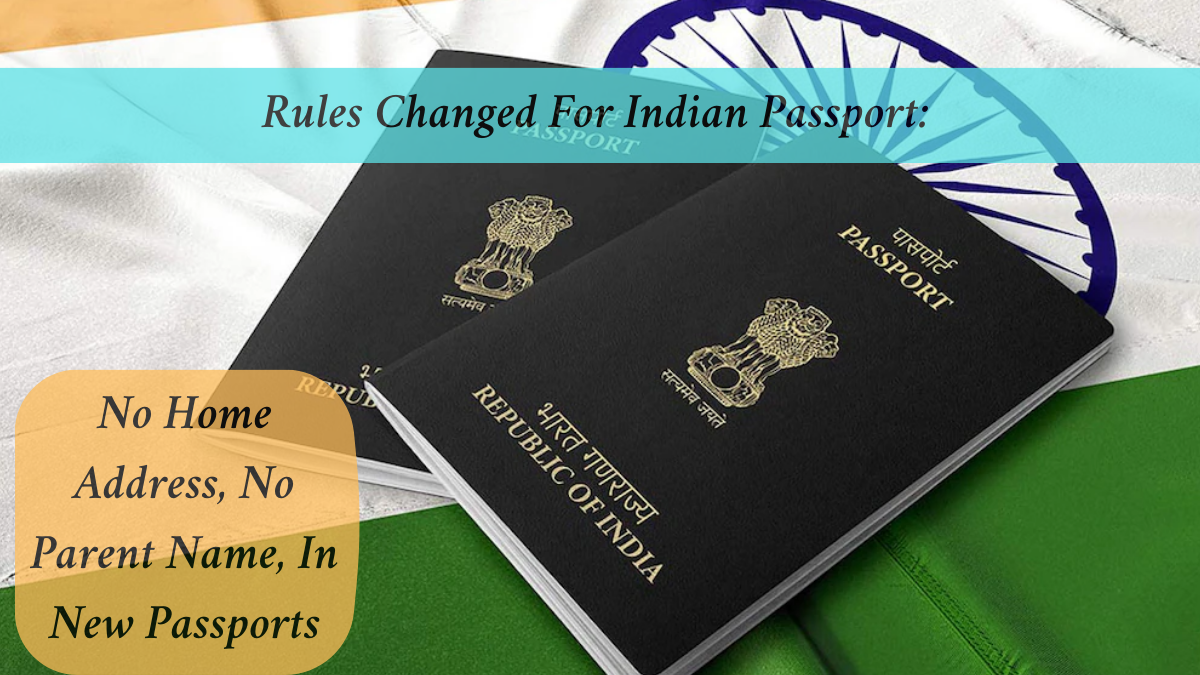The Government of India has recently introduced a new set of passport rules that will significantly impact Indian citizens planning to apply for a new passport or renew an existing one. These changes, aimed at making the passport issuance process more secure, streamlined, and privacy-conscious, come at a time when international travel is gaining momentum once again.

In this article, we will walk you through all the major rule changes, their implications, and how you can prepare for your passport application under the new system.
Summary Table of Revised Indian Passport Rules 2025
| Feature | New Rule |
|---|---|
| Proof of Date of Birth | Birth certificate mandatory for those born on or after 1 October 2023 |
| Residential Address | Removed from physical passport; stored digitally as barcode for immigration officials only |
| Passport Color Coding | Blue for ordinary citizens, White for government officials, Red for diplomats |
| Guardian/Parents’ Name | No longer printed on the passport |
| Number of Passport Centers | Increased from 442 to 600 over the next five years |
| Official Website | passportindia.gov.in |
Mandatory Birth Certificate for Passport Applicants
Under the updated rules, individuals born on or after 1 October 2023 must provide a birth certificate as the only acceptable proof of date of birth when applying for a passport. This new guideline replaces the earlier provision where applicants could submit various other documents like school leaving certificates, Aadhaar cards, or PAN cards.
Why This Change Matters
The mandatory submission of a birth certificate enhances the reliability and authenticity of the applicant’s personal details. It also reduces fraudulent documentation practices, thereby strengthening the identity verification process.
Who is Affected
- Affected: Citizens born on or after 1 October 2023
- Not Affected: Individuals born before this date can still submit alternate valid documents
Address No Longer Printed on Passport
In a significant shift towards data protection, the Ministry of External Affairs has decided to remove the printed residential address from passports. Instead, the information will be embedded in a digital barcode that can only be accessed by authorized immigration officers.
Benefits
- Enhances privacy by hiding sensitive information from plain view
- Protects citizens from data misuse in case the passport is lost or stolen
- Aligns Indian passports with international privacy norms
New Passport Color Code System
To simplify identity verification and streamline international travel, the Indian government has introduced a color-coded passport system.
Categories
- Blue Passport: For regular Indian citizens
- White Passport: Issued to government officials traveling on duty
- Red Passport: Designated for diplomats and high-ranking officials
This system aims to bring visual uniformity and assist immigration officers in categorizing travelers more efficiently.
Guardian/Parents’ Name Removed from Passport
Previously, the last page of Indian passports included the names of the applicant’s parents or guardians. With the new rules, this information has been omitted to enhance privacy.
Rationale Behind the Change
- Prevents unnecessary exposure of personal details
- Promotes individual identity
- Useful for applicants who may not wish to disclose parental information due to personal or legal reasons
Expansion of Passport Seva Kendras
To handle the expected increase in passport applications and improve service delivery, the government plans to increase the number of Passport Seva Kendras (PSKs) across the country.
Expansion Plan
- Current Centers: 442
- Target in Five Years: 600
This initiative will bring passport services closer to citizens in remote and under-served regions, significantly reducing waiting time and travel costs.
How to Apply for a Passport Under New Rules
Step 1: Gather Required Documents
- For individuals born after 1 October 2023: Birth certificate from the municipal authority
- For others: Acceptable alternate proof of date of birth
Step 2: Register Online
- Visit passportindia.gov.in
- Create an account and fill out the application form
Step 3: Schedule Appointment
- Book an appointment at your nearest Passport Seva Kendra
Step 4: Visit the PSK
- Carry original documents and application receipt
- Biometric data and photographs will be collected
Step 5: Track Application
- Use the online portal to monitor the progress of your application
Frequently Asked Questions (FAQs)
Q1: When will these new passport rules take effect?
- The rules are applicable starting from 1 October 2023.
Q2: Is a birth certificate mandatory for everyone applying for a passport?
- No, only individuals born on or after 1 October 2023 must submit a birth certificate. Others may provide alternate proof.
Q3: Why has the address been removed from passports?
- To protect the applicant’s personal data and enhance document security.
Q4: Can I still apply for a passport offline?
- While online applications are encouraged, some services may still be available offline through passport camps or regional offices.
Q5: How do I know which color passport I will receive?
- It depends on your category: Blue for citizens, White for government officials, and Red for diplomats.
Final Thoughts
The recent updates to the Indian passport rules represent a forward-looking move by the Government of India to make the passport application process more secure, efficient, and privacy-focused. Citizens planning to apply for or renew their passports should stay updated and follow the new guidelines closely to ensure a hassle-free experience.
For the most accurate and updated information, always refer to the official portal: https://www.passportindia.gov.in/
For More Information Click Here